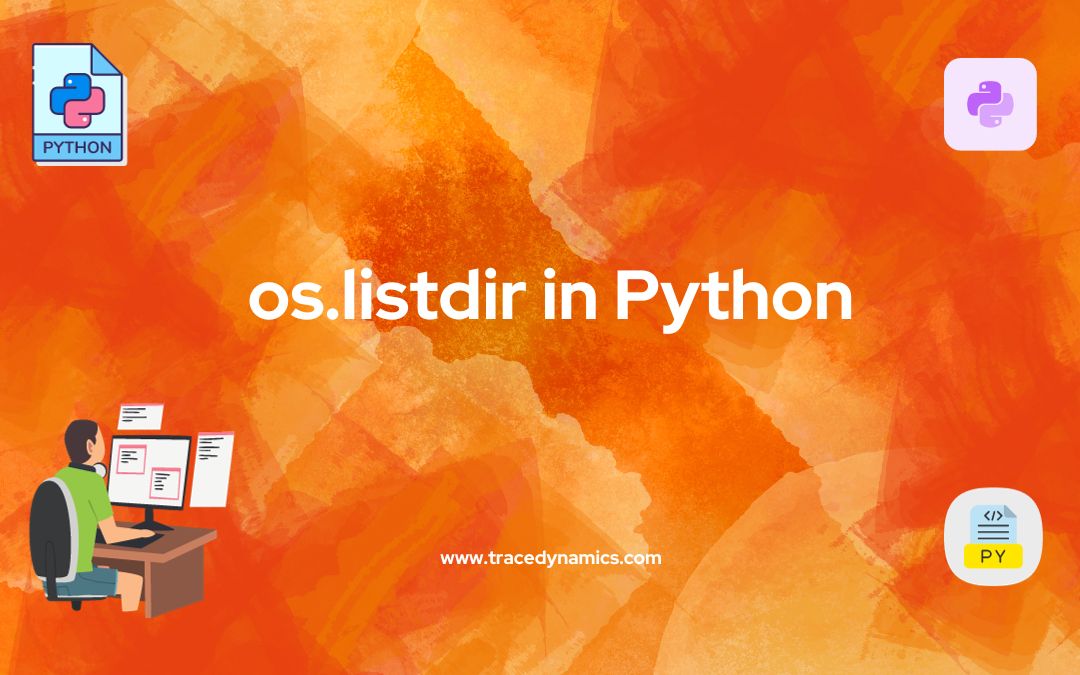
Python
The Python switch statement, a significant feature in Python 3.10, revolutionizes how developers write conditional logic in Python. This article not only covers the basics of the Python switch but also dives deep into its intricacies, offering insights into its practical applications and advanced implementations.programmers can write more efficient, readable, and maintainable code, leveraging the full power of Python 3.10’s capabilities.
Let’s explore how the switch statement in python simplifies decision-making processes in programming, comparing it to traditional methods and demonstrating its advantages in various programming scenarios. Through real-world examples and code snippets, this article aims to provide a thorough understanding of the functionality, ensuring readers are well-equipped to utilize this powerful feature in their Python projects.
Key Takeaways:
- Understanding the new match and case statements in Python 3.10.
- Historical perspective: How Python handled conditional logic before version 3.10.
- Practical implementations using elif ladders, dictionaries, and classes.
- Advantages of Python’s native switch statement over other languages.
Introduction
The concept of a switch statement in programming serves as a control flow tool, offering a more organized and readable alternative to multiple if-else statements. Python, until version 3.10, lacked a native switch-case structure, leading developers to devise alternative methods to achieve similar functionality. With Python 3.10, the introduction of match and case statements marked a significant development in Python’s approach to handling conditional logic.
Historical Perspective: Python’s Evolution and Switch Implementation
Before Python 3.10, Python developers relied on the elif keyword or functions to execute multiple conditional statements. This approach, though functional, lacked the simplicity and clarity that a native switch statement could provide.
Using elif for Conditional Logic
age = 120
if age > 90:
print("You are too old to party, granny.")
elif age < 0:
print("You're yet to be born")
elif age >= 18:
print("You are allowed to party")
else:
"You're too young to party"
Python 3.10: match and case Keywords
match term:
case pattern-1:
action-1
case pattern-2:
action-2
case pattern-3:
action-3
case _:
action-default
Working of Switch Case in Python
The switch statement in Python, like in other languages, is built around a condition and various cases. It takes a value, variable, or expression and executes the code block corresponding to the satisfied case.
Implementing Switch in Python using elif ladder
def num_in_words(no):
if(no == 1):
print("One")
elif(no == 2):
print("Two")
elif(no == 3):
print("Three")
else:
print("Give input of numbers from 1 to 3")
Using Dictionary for Switch Case Implementation
A dictionary in Python can serve as an effective way to implement switch-case functionality. Keys in the dictionary represent conditions or elements to be checked, while values hold the corresponding actions or outputs.
Dictionary with Elements as Values
def vowel(num):
switch = {
1: 'a',
2: 'e',
3: 'i',
4: 'o',
5: 'u'
}
return switch.get(num, "Invalid input")
Dictionary with Functions/Lambda Functions as Values
def add():
return n + m
def operations(op):
switch = {
'+': add(),
'-': subs(),
'*': prod(),
'/': div(),
'%': rem(),
}
return switch.get(op, 'Choose one of the following operator:+,-,*,/,%')
Implementing Switch using Python Class
class Month(object):
def month_1(self):
print("January")
def month_2(self):
print("February")
def month_3(self):
print("March")
# ... more month methods ...
def getMonth(self, no):
name_of_method = "month_" + str(no)
method = getattr(self, name_of_method, lambda: 'Invalid month number')
return method()
Advanced Switch Case Implementations in Python
Python’s flexibility allows for innovative implementations of switch-case constructs beyond traditional methods. These advanced techniques can cater to more complex scenarios and offer increased code efficiency and readability.
Using Dictionary with Nested Functions
def complex_operation():
def nested_function_1():
# Logic for case 1
pass
def nested_function_2():
# Logic for case 2
pass
switch = {
"case1": nested_function_1,
"case2": nested_function_2
}
return switch
Employing Lambda Functions for Inline Execution
switch = {
"case1": lambda x: x + 1,
"case2": lambda x: x - 1
}
Using Enums for Better Code Readability
from enum import Enum
class Options(Enum):
OPTION1 = 1
OPTION2 = 2
switch = {
Options.OPTION1: function_for_option1,
Options.OPTION2: function_for_option2
}
Integrating Match Statements in Object-Oriented Design
class MyClass:
def handle_cases(self, input):
match input:
case "option1":
self.method_for_option1()
case "option2":
self.method_for_option2()
Frequently Asked Questions
What is the switch statement in Python?
The switch statement in Python, introduced in Python 3.10, is a control flow tool that uses ‘match’ and ‘case’ keywords for conditional logic.
How does Python's switch statement differ from other languages?
Python’s switch statement, unique to Python 3.10, uses ‘match’ and ‘case’ instead of ‘switch’ and ‘case’, and doesn’t require a ‘break’ statement after each case.
Can Python switch be used with dictionaries?
Yes, Python switch can be implemented using dictionaries, with keys as conditions and values as actions or outputs.
Is the Python switch statement available in all Python versions?
No, the switch statement feature using ‘match’ and ‘case’ is only available from Python 3.10 onwards.
What are some practical applications of Python switch?
Python switch is useful in data processing, user interface management, and implementing state machines, among others.
How do you implement a switch case using a class in Python?
In Python, switch cases can be implemented using classes by defining methods for each case and using a method to select the appropriate action.
Can lambda functions be used in Python switch implementations?
Yes, lambda functions can be used for inline execution in Python switch implementations, providing a concise way to define actions.
What are the benefits of using Python's switch statement?
Python’s switch statement offers cleaner syntax, improved readability, and better organization of conditional logic compared to multiple if-else statements.
How do enums enhance Python switch case implementations?
Enums in Python provide a structured way to handle constants, enhancing code readability and maintainability in switch case implementations.
What was the common method to simulate switch cases in Python before version 3.10?
Before Python 3.10, developers commonly used the ‘elif’ ladder or dictionaries to simulate switch cases.

Python
Reset Index Pandas: A cornerstone in Python’s data science toolkit, Pandas offers a myriad of functionalities for data manipulation and analysis. Among these, the ability to reset indexes in DataFrames stands out as a crucial feature. This article delves deep into the nuances of resetting indexes, covering basic to advanced use cases, common issues, and real-world examples.
Key Takeaways:
- Understanding the significance and usage of the
reset_index() method in Pandas.
- Learning advanced techniques for handling MultiIndex DataFrames and preserving the original index.
- Gaining insights into common issues and optimization tips related to index resetting.
Introduction to Pandas Library
Pandas, an indispensable library in Python, predominantly serves for data manipulation and analysis. It provides an efficient, intuitive, and accessible way to work with structured data, primarily through its two key data structures: Series and DataFrames.
What is Index in Pandas DataFrame?
In Pandas, an index functions like an address, aiding in the fast location of data. We can think of it as a list or array of labels, uniquely identifying each row.
Overview of Reset Index in Pandas
The reset_index() method emerges as a powerful tool to reset the index of a DataFrame. It proves particularly useful in scenarios where reorganizing the index or converting it back to the default integer index becomes necessary.
Importance of Resetting Index
Resetting an index becomes essential when:
Working with Reset Index
Resetting the index in Pandas is both straightforward and powerful. Let’s now explore its syntax, parameters, and some practical examples.
Basic Syntax of Reset Index
DataFrame.reset_index(drop=False, inplace=False)
drop: If True, the old index is discarded.
inplace: If True, the modification occurs in place and does not return a new DataFrame.
Parameters of Reset Index
- level: Resets specific levels in MultiIndex.
- drop: Decides whether to drop the index or convert it to a column.
- inplace: Modifies the original DataFrame if set to True.
Resetting Index with Examples
Example 1: Basic Reset Index
Consider a DataFrame df with a custom index. To reset it to the default integer index:
df.reset_index(inplace=True)
Example 2: Reset Index with Drop
To reset and remove the existing index:
df.reset_index(drop=True, inplace=True)
Real-world Example: Data Cleaning and Preprocessing
In data cleaning, often you need to reset the index after filtering or sorting operations. For instance, after removing missing values, the index can become non-sequential. Resetting it ensures a clean, sequential index.
Advanced Use Cases
Diving deeper into the application of reset_index(), let’s explore some advanced scenarios.
Handling MultiIndex DataFrames
MultiIndex, or hierarchical indices, add a level of complexity. Thus, resetting index in such cases demands careful handling to avoid data misalignment.
Example: To reset a specific level in a MultiIndex DataFrame:
df.reset_index(level=0, inplace=True)
Preserving the Original Index
In certain scenarios, you may want to keep the original index as a column in the DataFrame. Achieve this by:
df.reset_index(drop=False, inplace=True)
Mastering fillna Pandas for Data Handling
Common Issues and Solutions
Encountering issues while resetting indexes is common. Here’s how you can tackle them.
Common Errors when Resetting Index
- TypeError: This occurs if
inplace is set to anything other than a boolean.
- KeyError: This error is triggered when trying to reset an index that doesn’t exist.
Performance Considerations
Resetting the index on large DataFrames can be resource-intensive. Thus, employing efficient coding practices, such as limiting the use of inplace=True, can help optimize performance.
Real-world Examples
Let’s explore some practical applications of resetting indexes in real-world scenarios.
Example: Data Visualization and Resetting Index
In data visualization, having a sequential index is crucial for accurate plotting. Resetting the index ensures that the data representation remains coherent and orderly.
Frequently Asked Questions
How can I reset the index of a DataFrame without creating a new one?
Utilize the inplace=True parameter in the reset_index() method.
Can I reset the index of a subset of my DataFrame?
Yes, but it requires creating a subset and then applying reset_index().
Does resetting the index affect my DataFrame's memory usage?
Yes, especially if inplace=False is used, as it creates a copy of the DataFrame.
What are the differences between <code>reset_index()</code> and <code>set_index()</code>?
reset_index() reverts the index to the default integer index, while set_index() sets a column as the new index.
Is it possible to reset the index while keeping the original order?
Yes, by using reset_index(drop=False), the original index is preserved as a column.
How do I reset the index of a MultiIndex DataFrame?
Use reset_index(level=[level_names]) to specify which levels to reset in a MultiIndex DataFrame.
Can I rename the index column after resetting it?
Absolutely, after resetting, you can rename the new column using the rename(columns={'index': 'new_name'}) method.
What happens if I reset the index of an empty DataFrame?
Resetting the index of an empty DataFrame will simply yield another empty DataFrame with a default integer index.
Can resetting the index improve DataFrame performance?
In certain cases, resetting the index can improve performance, especially if the original index was causing inefficiencies.
How does the <code>drop</code> parameter in <code>reset_index()</code> affect the result?
If drop=True, the original index is removed. If drop=False, it is added as a new column in the DataFrame.

Python
os.makedirs in Python: Python, with its versatile and powerful standard library, offers various ways to interact with the file system. One such functionality is provided by the os module’s os.makedirs() method, which is crucial for creating directories in a Python environment. This article dives deep into understanding the os.makedirs method, providing insights into its usage, practical applications, and key considerations for Python developers.
Key Takeaways:
Overview of os.makedirs
os.makedirs() is a method in Python’s os module that enables the creation of directories. It’s particularly useful when you need to create multiple nested directories in a single operation. This method stands out for its ability to handle intermediate directories that may not exist in the specified path.
Importance in Python File System Operations
Python’s file system operations are integral for scripts and applications that need to interact with the file system. os.makedirs() plays a vital role in automating and managing directory structures, making it an essential tool for Python programmers.
Why is os.makedirs() crucial?
How os.makedirs Differs from Other Directory Creation Methods
os.makedirs() is often compared with os.mkdir(), another method in the os module used for creating directories. The primary difference lies in their capabilities:
- os.mkdir(): Creates a single directory; fails if intermediate directories are missing.
- os.makedirs(): Capable of creating all intermediate directories in the specified path.
Understanding os.makedirs in Depth
Diving deeper into os.makedirs(), it’s essential to understand its syntax, parameters, and how it handles existing directories.
Syntax and Parameters
The basic syntax of os.makedirs() is as follows:
os.makedirs(path, mode=0o777, exist_ok=False)
path: The directory path to be created.mode: (Optional) The mode (permissions) for the new directory.exist_ok: (Optional) A flag that allows existing directories.
Mode and Permissions in Directory Creation
The mode parameter specifies the permissions of the newly created directory. It’s an optional parameter with a default value of 0o777, representing the widest possible access permissions.
Handling Existing Directories and Errors
The exist_ok parameter determines the method’s behavior when the target directory already exists:
False (default): Raises a FileExistsError if the directory exists.True: Silently continues without raising an error.
Practical Examples and Usage
To illustrate the functionality of os.makedirs(), let’s consider some practical examples.
Basic Example of Creating Directories
Suppose you need to create a directory structure for storing project files:
import os
os.makedirs("/path/to/project/files")
This command creates the files directory along with all necessary intermediate directories.
Advanced Use Cases
os.makedirs() can be used in more complex scenarios, such as setting up directory structures for multi-tier applications or handling dynamic path creation in scripts.
Error Handling and Best Practices
Effective error handling is crucial when working with file system operations. With os.makedirs(), it’s important to handle exceptions like FileExistsError and PermissionError to ensure robustness in your scripts.
Best Practices:
- Always check for potential errors and handle them appropriately.
- Use the
exist_ok parameter judiciously to avoid unintentional overwriting.
Integration with Other Python Modules
os.makedirs() can be combined with other modules in Python for more powerful and flexible file system operations.
Combining os.makedirs with os.path
os.path is another module in Python that provides functions for manipulating file paths. Combining it with os.makedirs() enhances the capability to handle path operations dynamically.
Example:
import os
path = os.path.join("base", "directory", "subdirectory")
os.makedirs(path)
Mastering File Path Operations with os.path.join
Interactions with File Handling
os.makedirs() also plays a significant role in file handling operations, especially when working with file I/O in Python.
Synergy with pathlib Module
The pathlib module in Python offers an object-oriented approach to file system paths. os.makedirs() complements pathlib by providing a methodical way to create directories within these paths.
Advanced Use Cases of os.makedirs
os.makedirs is not just limited to creating simple directory structures. Its real power lies in handling more complex scenarios.
Dynamic Directory Creation
In situations where directory paths are generated dynamically, such as in web applications or data processing scripts, os.makedirs proves invaluable:
import os
user_folder = input("Enter folder name: ")
path = f"/data/users/{user_folder}"
os.makedirs(path, exist_ok=True)
Setting Up Project Structures
For developers automating the setup of project structures, os.makedirs can create nested directories for various components like logs, data, and configs:
import os
project_name = "MyProject"
directories = ["logs", "data", "configs"]
for dir in directories:
os.makedirs(f"{project_name}/{dir}")
Tables with Relevant Facts
| Feature |
Description |
| Recursive Creation |
Can create all intermediate directories in the path. |
| Error Handling |
Handles FileExistsError when exist_ok is False. |
| Permissions |
Sets directory permissions through the mode parameter. |
| Integration |
Works well with os.path and pathlib for path manipulations. |
| Use Cases |
Ideal for setting up project structures, handling dynamic paths. |
Further Explorations with os.makedirs
Beyond basic directory creation, os.makedirs can be utilized in various advanced programming contexts.
Integration with Data Processing Scripts
In data science and analytics, os.makedirs is often used to create directories for storing datasets, logs, or output files. It ensures that the necessary file structure is in place before data processing begins.
Customizing Directory Permissions
The mode parameter in os.makedirs can be used to set specific permissions for new directories, adhering to system security protocols.
Understanding Python String Length using len()
Error Handling Strategies
A critical aspect of using os.makedirs is robust error handling. Anticipating and managing potential exceptions like PermissionError or FileExistsError ensures the stability of Python applications.
Table: Error Handling in os.makedirs
| Error Type |
Description |
Handling Strategy |
| FileExistsError |
Raised if the directory exists when exist_ok is False |
Use try-except block or set exist_ok to True |
| PermissionError |
Occurs when insufficient permissions |
Check user permissions, adjust mode parameter |
Frequently Asked Questions (FAQs)
What is the purpose of os.makedirs in Python?
os.makedirs is used for creating directories recursively. It’s capable of making entire directory trees, including all necessary intermediate directories.
How does os.makedirs handle existing directories?
By default, os.makedirs raises a FileExistsError if the target directory already exists. This behavior can be overridden by setting the exist_ok parameter to True.
Can os.makedirs set permissions for new directories?
Yes, os.makedirs can set permissions for new directories using the mode parameter.
Is os.makedirs compatible with the pathlib module?
Yes, os.makedirs works well alongside the pathlib module, offering complementary functionalities for file system path manipulations.
Can os.makedirs be used for dynamic directory creation in scripts?
Absolutely, os.makedirs is particularly useful in scenarios where directory paths need to be generated dynamically, such as in web applications or automated scripts.

Python
os listdir in Python: Python, with its vast array of built-in modules, simplifies file handling in ways that resonate with both beginners and experienced programmers alike. One such invaluable tool in Python’s arsenal is the os module, particularly its os.listdir function. This article delves into the intricacies of os.listdir, offering insights into its practical applications and best practices.
Key takeaways:
- Grasp the fundamental concept of
os.listdir in Python.
- Explore the
os module and its significance in file handling.
- Master basic and advanced file operations using
os.listdir.
What is os.listdir in Python?
os.listdir is a method in the Python os module. It’s used to fetch a list of file and directory names in a specified directory. This function is pivotal for tasks involving directory traversal and file manipulation.
Basic Usage of os.listdir
import os
# Fetch the contents of the current directory
directory_contents = os.listdir('.')
print(directory_contents)
Why os.listdir is Essential
os.listdir plays a crucial role in file handling operations. Whether it’s for sorting files, performing batch operations, or simply organizing data, understanding os.listdir is fundamental for efficient Python scripting.
Understanding the os Module
The os module in Python is a versatile tool for interfacing with the operating system. It provides functions for creating, modifying, and deleting files and directories, making it essential for system-level scripting.
Key Functions in the os Module
os.remove(): Removes a file.os.rmdir(): Deletes an empty directory.os.path.join(): Joins one or more path components intelligently.
Basic File Operations Using os.listdir
os.listdir is not just about listing files and directories; it’s the starting point for many file manipulation tasks.
Listing Files and Directories
Using os.listdir to list all files and directories in a specific path is straightforward:/p>
import os
# Specify the path
path = '/my/directory'
# List all files and directories in the path
print(os.listdir(path))
Advanced File Handling Techniques
Moving beyond the basics, os.listdir can be employed in more complex scenarios, like sorting files or handling various file types.
Sorting Files
You can sort the files obtained via os.listdir based on different criteria, such as name or modification date.
Code Example: Sorting files by date
import os
files = os.listdir('/path/to/directory')
# Sort files by modification date
files.sort(key=lambda x: os.path.getmtime(x))
Handling Different File Types
os.listdir can be combined with other functions to handle specific file types differently.
Code Example: Filtering text files
import os
# List all files
files = os.listdir('/path/to/directory')
# Filter text files
txt_files = [f for f in files if f.endswith('.txt')]
Safety and Precautions in File Handling
File operations can be risky if not handled properly. os.listdir and related functions should be used with precautions to avoid unintentional data loss.
Safe File Handling Practices
Safety Precautions in File Deletion
Advanced File Deletion Strategies
File deletion, an integral part of file management, can be handled efficiently using os.listdir in conjunction with other os module functions.
Using Glob Patterns for File Selection
The glob module, used in tandem with os.listdir, can simplify the process of selecting files matching specific patterns.
Code Example: Deleting all .txt files
import glob, os
for file in glob.glob('*.txt'):
os.remove(file)
Implementing Recursive File Deletion
For more extensive file management, such as deleting files in a directory and its subdirectories, os.walk() is an invaluable tool.
Code Example: Recursive file deletion
import os
# Traverse directory and subdirectories
for root, dirs, files in os.walk('/path/to/directory'):
for file in files:
os.remove(os.path.join(root, file))
Creating a Backup Before Deletion
A critical best practice in file handling is creating backups before deletion. Python’s shutil module can be employed for this purpose.
Copying Files to Backup Directory
import shutil, os
# Copy file to backup directory before deletion
source = 'important_file.txt'
backup = 'backup/important_file_backup.txt'
shutil.copy(source, backup)
os.remove(source)
Handling Special File Deletion Cases
When dealing with file deletion, certain special cases, such as deleting read-only files, require additional steps.
Deleting Read-Only Files
To delete read-only files, you must first change their mode to writable.
Code Example:
import os, stat
file_path = 'read_only_file.txt'
# Change file mode to writable
os.chmod(file_path, stat.S_IWRITE)
# Delete the file
os.remove(file_path)
Using Third-Party Tools for Secure Deletion
For secure deletion tasks, third-party libraries offer advanced functionality.
Secure Deletion with pysecuredelete
from secure_delete import secure_delete
# Securely delete a file
secure_delete.secure_delete('sensitive_file.txt')
Wrapping Up with Best Practices
To ensure safe and efficient file handling in Python, adhering to best practices is crucial.
Best Practices for File Deletion
Frequently Asked Questions (FAQs)
How does os.listdir handle hidden files?
os.listdir includes hidden files in its output, as they are standard files from the OS perspective.
Can os.listdir be used to list files recursively?
No, os.listdir only lists files in the specified directory. For recursive listing, use os.walk().
Is there a way to filter files by type with os.listdir?
Yes, you can filter files by type using list comprehensions or loops with conditionals.
How to handle errors in os.listdir?
Use try-except blocks to handle potential exceptions like FileNotFoundError.
Can os.listdir sort files by size?
os.listdir doesn’t sort files by size directly, but you can achieve this by using os.stat() in combination with sorting functions.
Does os.listdir work with network paths?
Yes, as long as the network path is accessible from the OS, os.listdir can list its contents.
What are the limitations of os.listdir?
os.listdir does not provide detailed file information like size or modification date, and it doesn’t list contents recursively.
Can os.listdir be used on all operating systems?
os.listdir is cross-platform and works on all operating systems supported by Python.
How to exclude directories from os.listdir output?
You can exclude directories by checking if each entry is a file or a directory using os.path.isdir().
Is os.listdir affected by file permissions?
Yes, os.listdir might not list files or directories for which the user doesn’t have read permissions.

Python
Python Import From Parent Directory: Python, renowned for its simplicity and power, offers an extensive system for importing modules and packages. This capability is critical for accessing Python’s vast libraries and reusing code efficiently. In this article, we delve into the nuances of importing modules from parent directories, a task that, while sometimes complex, is essential for effective Python project management.
Key Takeaways:
- Understanding Python’s import system and directory structure.
- Methods for importing modules from parent directories.
- Practical applications and examples.
Introduction to Python Imports
Python’s import system is pivotal in leveraging the language’s extensive libraries and modules. Those simple lines of code at the beginning of your scripts, starting with import or from, are your gateway to Python’s robust functionalities.
In this section, we’ll explore how to import modules from a parent directory in Python and the potential pitfalls in this process.
What is the Python Import System?
The Python import system facilitates efficient code reuse and organization. It is essential for maintaining complex projects. To import a module or package, the import statement is used. Modules are distributed as packages, which are directories with a collection of Python files.
To import from a parent directory, you can employ the sys.path module to add the parent directory to Python’s path, facilitating the import process.
Basics of Python Directory Structure
Understanding the Python directory structure is akin to having a well-organized workspace: it boosts productivity and clarity. This section will cover the basics of Python’s directory structure, crucial for proper project organization.
Package Structure
A typical Python project directory structure might look like this:
- project/
- package1/
- __init__.py
- module1.py
- module2.py
- package2/
- __init__.py
- module3.py
- module4.py
- main.py
In this structure, ‘project’ is the root directory containing two sub-packages: ‘package1’ and ‘package2’. Each package includes its .py files and an __init__.py file.
What Are __init__.py Files?
__init__.py files are essential for defining a package’s behavior upon import. These files can be empty or contain initialization code and indicate to Python that the folder is a package.
To import a module from a parent directory, you use the sys.path method, appending the parent directory path to sys.path.
Techniques for Importing from Parent Directory
Importing modules from parent directories can be tricky, but it’s manageable with the right techniques.
Method 1: Using sys.path.append()
The sys.path.append() method allows you to add the parent directory to Python’s list of paths. Here’s an example:
import sys
sys.path.append('..')
# Now you can import modules from the parent directory
import my_module
Method 2: Using sys.path.insert()
Alternatively, you can use the sys.path.insert() method. This method inserts the parent directory into the sys.path list, specifying the paths for Python to search for packages and modules.
Advanced Import Techniques
Understanding advanced techniques for importing modules is crucial for managing complex Python projects.
Relative Imports
Relative imports in Python are used for importing modules based on their location in the directory hierarchy. This method utilizes dot (.) notation for the current directory and double dot (..) for the parent directory. For instance:
# Inside sibling_directory/module_b.py
from .. import module_a
This code demonstrates importing module_a from the parent directory. Note that relative imports require the parent directory to be a package (having an __init__.py file).
Adjusting sys.path
You can also modify the sys.path to import modules from a parent directory. This requires using the os module to get the parent directory path:
import os
import sys
parent_dir = os.path.dirname(os.path.dirname(os.path.abspath(__file__)))
sys.path.append(parent_dir)
import module_a
In this snippet, module_a.py is imported from the parent directory by appending the parent directory’s path to sys.path.
Working with Modules and Packages
Modules and packages are Python’s tools for organizing and reusing code. Let’s explore how to effectively work with them.
Namespaces
Namespaces in Python help avoid conflicts between variable, function, and class names across different modules. They are categorized as:
- Global Namespace: Refers to the namespace of the entire module.
- Local Namespace: Within a function or class.
You can access a name in a particular namespace using namespace[name].
Variables and Definitions
Variables, functions, and classes defined in a Python script are stored in its namespace. Importing the script as a package allows you to reuse these definitions:
# my_variable.py
my_variable = 5
def my_function(x):
return x + my_variable
Import Statements
Import statements in Python allow you to incorporate other files, modules, or packages:
import module_name: Imports a module, accessing its definitions via module_name.definition_name.from module_name import some_definition: Imports a specific definition, allowing direct usage without the module prefix.from module_name import *: Imports all definitions but can lead to naming conflicts.
Real-Time Examples and Use Cases
Incorporating real-world examples can significantly enhance your understanding of Python imports. For instance, on Stack Overflow, a common question is about importing modules from parent directories in multi-level project structures.
Consider a project where a script in a sub-directory needs to access a module in the parent directory. The sys.path manipulation techniques discussed above are often recommended solutions.
Common Challenges and Solutions
Working with imports in Python can sometimes lead to errors, such as ImportError and ModuleNotFoundError. These issues often arise due to incorrect file paths or misunderstandings about the Python path. To avoid these errors, ensure that the directory structure is properly set up and that sys.path is correctly modified.
Example of Handling ImportError:
try:
import my_module
except ImportError:
print("Module not found")
This code demonstrates a basic way to handle import errors, enhancing the robustness of your Python scripts.
Frequently Asked Questions (FAQs)
Can I import modules from a parent directory in Python?
Yes, you can import modules from a parent directory in Python using methods like sys.path.append() or sys.path.insert().
What is the purpose of __init__.py files in Python directories?
__init__.py files are used to indicate to Python that a directory should be treated as a package, allowing for imports from that directory.
How do I handle ImportError and ModuleNotFoundError in Python?
These errors can be handled by ensuring correct directory structure and paths, and using try-except blocks for error handling.
What are relative imports in Python?
Relative imports in Python allow you to import modules based on their relative position in the directory hierarchy, using dot notations.
Is modifying sys.path a recommended practice in Python?
Modifying sys.path is a common practice but should be done with caution to avoid disrupting the standard Python paths.

Python
Pi in Python: Pi, denoted as π, is a fundamental mathematical constant representing the ratio of a circle’s circumference to its diameter. In Python, pi holds a significant place in various mathematical and scientific computations. This article explores how to effectively use and calculate pi in Python, diving into methods involving the Math and NumPy libraries, along with advanced techniques for calculation.
Key Takeaways:
Basic Usage of Pi in Python
In Python, pi is most commonly accessed through the Math library. The math module provides a straightforward way to use pi in your programs.
import math
print(math.pi)
This simple code snippet outputs the value of pi to a high degree of precision, making it ideal for various applications.
Accessing Pi Using the Math Library
To begin using pi in Python, one needs to understand the basics of importing and utilizing the math module.
Example: Calculating Circle Properties
import math
radius = 5
circumference = 2 * math.pi * radius
area = math.pi * radius ** 2
print("Circumference:", circumference)
print("Area:", area)
In this example, pi is used to calculate the circumference and area of a circle, demonstrating its fundamental role in geometry.
Practical Examples Using Math.pi
Apart from basic geometric calculations, pi is used in more complex scenarios:
- Trigonometric Calculations: Pi plays a vital role in trigonometry, aiding in the computation of angles and lengths in various contexts.
- Engineering and Physics Simulations: In fields like engineering and physics, pi is crucial for calculations involving circular motion, wave dynamics, and more.
Utilizing Pi in Python with the NumPy Library
NumPy, a popular library for numerical computations in Python, also provides access to pi. This is particularly useful in scientific computing.
Accessing Pi in NumPy
Here’s how you can access pi using NumPy:
import numpy as np
print(np.pi)
Comparison with the Math Library
While both libraries offer pi, NumPy is often preferred for large-scale and array-oriented computations due to its efficiency with array operations.
Calculating Pi Using the Math Library
Python’s math library not only allows access to pi but also provides functions that are inherently dependent on pi.
Using Radians for Pi Calculation
Many functions in the math library, like sin() and cos(), use radians, where pi is crucial.
Example: Sin and Cos Functions
import math
angle_in_degrees = 180
angle_in_radians = math.radians(angle_in_degrees)
sin_of_angle = math.sin(angle_in_radians)
cos_of_angle = math.cos(angle_in_radians)
print("Sin:", sin_of_angle)
print("Cos:", cos_of_angle)
Series Approximation Method
Pi can also be calculated using series approximation methods such as the Leibniz formula:
def calculate_pi(terms):
pi = 0
for k in range(terms):
pi += ((-1)**k) / (2*k + 1)
return 4 * pi
approx_pi = calculate_pi(1000)
print("Approximate Pi:", approx_pi)
This method approximates pi by summing a series of fractions.
Advanced Techniques for Calculating Pi
Beyond basic methods, Python allows for more advanced techniques to calculate pi.
Monte Carlo Simulation
One popular method is the Monte Carlo simulation, which uses random sampling to estimate the value of pi.
Practical Applications of Pi in Python
Pi finds numerous applications in Python, from simple geometric calculations to complex scientific computations. Here are some examples:
- Geometric Calculations: Calculating areas, circumferences, and volumes of circular and spherical shapes.
- Simulation and Modeling: In simulations, pi is used for modeling circular motion and oscillations.
- Data Science and Machine Learning: Pi is involved in algorithms and models where circular relationships and trigonometric functions are important.
Advanced Calculations with Pi
Pi is not just limited to basic geometrical calculations. Its applications extend to more complex mathematical problems.
Higher Precision Calculations
In scenarios requiring high precision, such as scientific research and complex simulations, Python’s ability to handle pi with significant accuracy is invaluable.
Integration with Other Python Libraries
Pi’s utility increases when used in conjunction with other Python libraries like Pandas for data analysis or Matplotlib for data visualization.
Wrapping Up
This article provides a comprehensive guide on using and understanding pi in Python. From basic applications to advanced techniques, it covers a wide range of topics, making it a valuable resource for both beginners and experienced Python programmers.
Remember, the journey of exploring Python and its capabilities with pi is an ongoing process. Continuously experimenting and applying these concepts in different scenarios will deepen your understanding and enhance your skills.
Frequently Asked Questions (FAQs)
How can I get a high-precision value of Pi in Python?
Python’s math module provides a high-precision value of pi. For even higher precision, external libraries like mpmath can be used.
What are the differences between Math.pi and Numpy.pi?
While both provide the value of pi, numpy.pi is generally preferred for array operations and large-scale numerical computations.
How do I calculate the area of a circle in Python?
To calculate the area of a circle in Python, use the formula area = math.pi * radius**2, where radius is the radius of the circle.
Can I use Pi for 3D calculations in Python?
Yes, pi is essential for calculating volumes and surface areas of spherical and cylindrical shapes in 3D calculations.
What is the best way to teach Pi in Python to beginners?
Start with basic geometrical calculations like the area and circumference of a circle, and gradually introduce more complex concepts.






